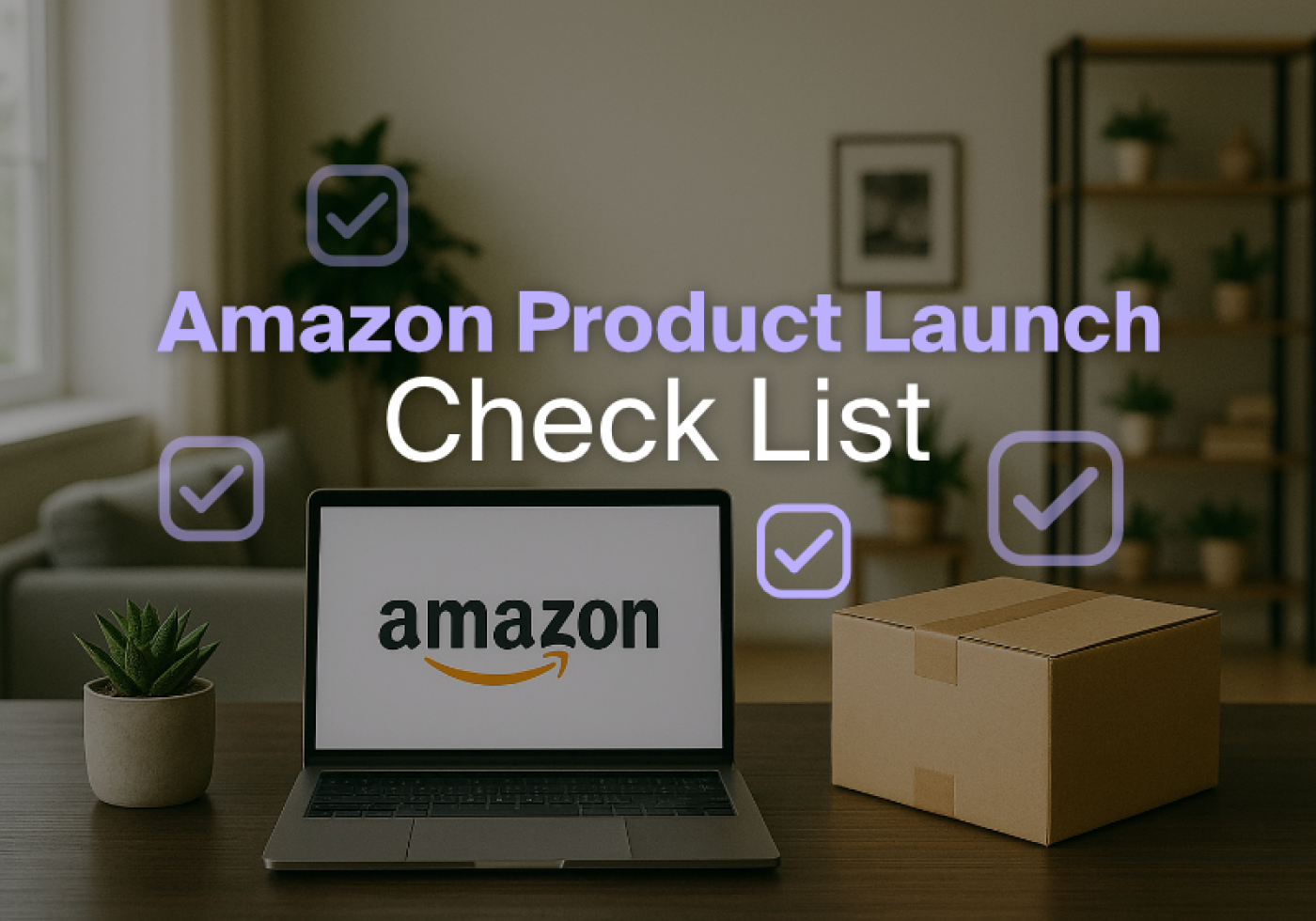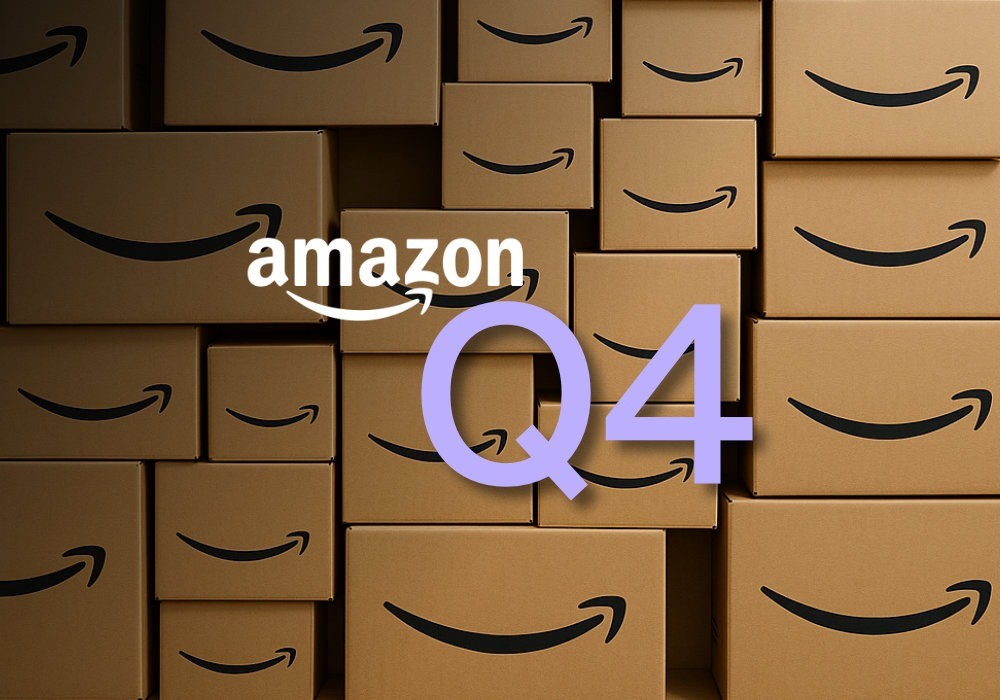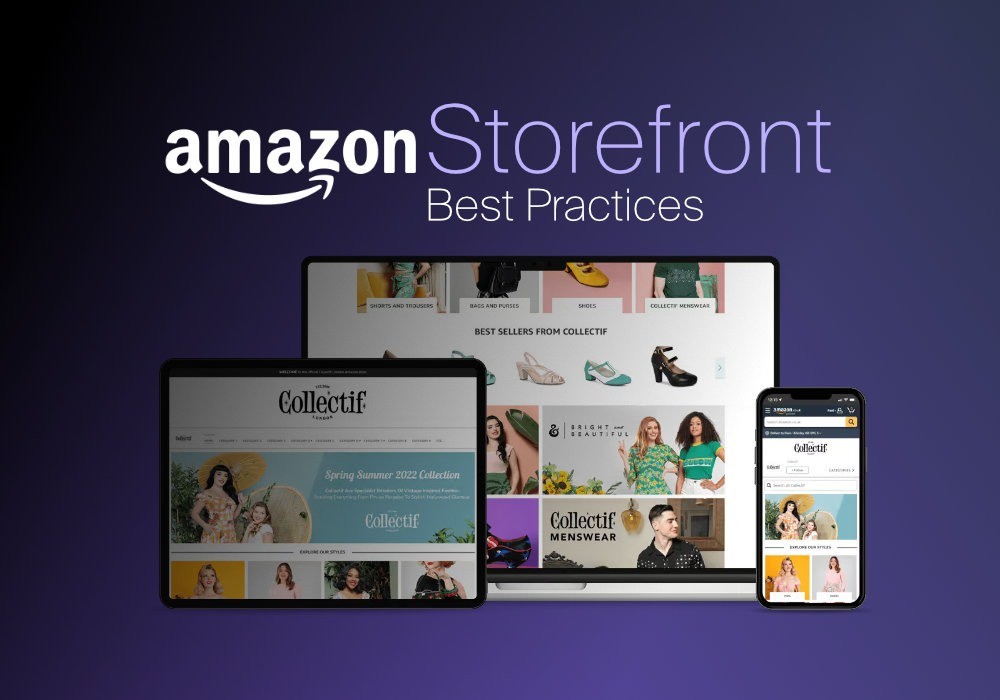Launching your first product on Amazon is a critical milestone—but if not done strategically, even great products can fade into obscurity. The early days of a listing’s life—often called the “honeymoon period”—are when Amazon is most willing to test your product in search results. That’s your window to make an impact.
This detailed checklist walks you through every essential step of a successful FBA launch. From initial research and listing optimisation to inventory readiness, PPC setup, and review generation, this guide ensures no part of your launch is left to chance. With the right preparation and data-driven decisions, you’ll gain visibility, build trust, and generate the sales momentum your product needs to succeed.
1. Pre-launch product research: Set yourself up for success
Before you even create a listing, your product research must be watertight. Successful sellers don’t guess—they validate.
Start by analysing demand using tools like Amazon's search bar (autocomplete), category Best Seller Ranks, and third-party estimators. You're looking for a healthy mix of search volume and manageable competition. Saturated markets or trend-driven niches may seem appealing but are rarely ideal for beginners unless your offer is clearly differentiated.
Next, review competitor listings. Study their features, pricing, negative reviews, and images. Look for customer pain points your product can solve or opportunities where your listing can outperform theirs visually or in clarity. Finally, calculate profitability. Factor in FBA fees, landed cost, referral fees, and storage costs. A product with great sales volume but tight margins may not be worth pursuing.
2. Know your customer: Understand who you’re targeting
To stand out in a crowded marketplace, you need to align your product messaging with your ideal buyer.
Build a customer profile: What do they care about? What are their challenges? What language do they use in reviews? Use these insights to shape your copy, bullet points, and images. If you're selling a pet product, you're not just offering a chew toy—you’re giving peace of mind to dog owners worried about boredom or destruction.
The better your targeting and tone, the more likely shoppers will convert into buyers—and eventually, reviewers.
3. Develop a clear unique selling proposition (USP)
Your product needs a reason to be chosen over dozens of others. That’s your USP—what makes your product different, better, or more relevant.
Maybe your product is made with eco-friendly materials, includes a bonus item, or solves a common flaw in competing products. Once identified, your USP should be visible in your title, bullet points, A+ content, and images.
It’s not enough to be “premium” or “affordable”—your USP should solve a real customer problem or create added value.
4. Build and optimise your listing for visibility and conversions
A launch is only as good as its listing. You need a listing that is both keyword-optimised for Amazon’s algorithm (A9) and persuasive for human shoppers.
Key elements:
- Title: Include high-priority keywords and your brand name. Keep it readable.
- Bullet points: Address benefits, not just features. What does the product do for the customer?
- Description: Expand on your product’s story, especially if you don’t have Enhanced Brand Content yet.
- Images: Use 7+ high-resolution images showing product use, dimensions, and lifestyle scenarios.
- Backend keywords: Add relevant search terms in the search term fields (no duplicates or punctuation).
If you’re brand registered, A+ Content allows you to further enrich your listing with visuals, brand storytelling, and detailed product modules. This helps increase conversion and reduce return rates.
5. Ensure inventory is ready and well-stocked for launch
Stockouts during launch kill momentum. Amazon rewards consistent availability. As part of your pre-launch checklist:
- Create a shipping plan and send stock early—Amazon may spread your inventory across multiple fulfilment centres.
- Label and package your items according to FBA prep standards.
- Account for delays—send more than your initial projections if budget allows.
You can use Amzigo’s Product Analysis tools post-launch to monitor stock levels, days of inventory remaining, and sales velocity—making it easier to plan reorders without running dry.
6. Plan your launch timeline with key milestones
A launch shouldn’t be rushed. Give yourself time to complete each phase. Break your schedule into milestones:
- Listing creation complete
- Stock shipped to FBA
- PPC campaigns created
- Launch price and promotions scheduled
- Review strategy initiated
Timing matters. Avoid launching just before holidays unless you're fully prepared. Instead, aim for periods when ad costs are stable and customer intent is high (January, spring, and back-to-school seasons tend to be less competitive).
7. Launch with a compelling, conversion-focused price
Price matters more than ever during launch. You want to incentivise clicks and purchases to build up your order velocity. That doesn’t mean racing to the bottom—but consider starting with an introductory price below your target retail price.
Use a limited-time promotion, such as a percentage-off coupon, to encourage conversion without permanently lowering your list price. You can gradually increase price as reviews and sales come in.
8. Create and launch your Amazon PPC campaigns
Your product won’t rank organically right away. Pay-per-click (PPC) ads are essential to get your product seen.
Start with Sponsored Product campaigns targeting:
- Exact-match high-volume keywords
- Broad-match keyword tests
- ASIN-targeted ads (targeting competitor listings)
- Auto campaigns (for keyword discovery)
Set a manageable daily budget and monitor performance regularly. You’re not aiming for profitability in week one—your goal is visibility, data collection, and building sales momentum.
9. Generate early reviews—without breaking the rules
Social proof is critical. Shoppers are far less likely to buy from a listing with no reviews. Amazon’s review guidelines are strict, so focus on compliant methods:
- Enrol in Amazon Vine (if eligible). Vine invites trusted reviewers to try your product in exchange for a review.
- Use Amzigo’s Automated Review Centre to trigger compliant review and feedback requests after delivery.
- Include compliant inserts asking for honest reviews without offering incentives.
- Encourage repeat customers or followers (if applicable) to share their experience on Amazon.
Aim for consistent review volume. Even 5–10 strong, early reviews can transform your listing’s performance.
10. Monitor your listing daily during launch
Once live, your job isn’t over. Your listing performance should be reviewed daily during the first 2–4 weeks. Look for:
- Sales velocity
- Conversion rates
- Click-through rates
- Ad performance
- Inventory levels
- Customer questions or complaints
With Amzigo, you can track many of these metrics in one place. Its dashboard includes conversion rate insights, review data, and sales order tracking—so you’re never flying blind.
Make changes to your PPC bids, bullet points, or images only when data supports it. Don’t panic if sales dip for a day. Focus on trends, not isolated results.
11. Drive external traffic to boost visibility
Amazon rewards external traffic that converts. In the early stages of launch, consider directing warm traffic from:
- Your brand’s social media (Instagram, TikTok, Facebook)
- Influencers in your niche
- Blog posts or review sites
- Email lists (if you’ve built one)
Use Amazon Attribution links to track conversions from outside channels. External sales help your listing gain relevance and improve organic ranking.
12. Post-launch: Analyse, adapt, and scale
After the first 30 days, review your results:
- Which keywords are converting?
- What’s your current organic rank?
- Are you running out of stock?
- How are reviews trending?
Refine your listing based on feedback. Update your images, expand A+ content, or adjust pricing to remain competitive. If you're seeing momentum, consider scaling your ad budget or introducing new product variations.
Use Amzigo’s product-level analytics to forecast stock needs, identify underperforming ASINs, and monitor marketplace-specific data.
Conclusion
Your first product launch on Amazon is a crucial moment in your business journey. Done well, it sets the foundation for long-term growth. Done poorly, it can stall momentum and cost you visibility, rankings, and profitability. Every step matters—product research, listing optimisation, inventory readiness, PPC execution, and early review generation.
By following this detailed checklist and pairing it with tools like Amzigo’s real-time analytics and automated review features, you’re giving your launch the best chance of success. Amazon rewards action-takers who are prepared. Now’s your time to enter the market, capture attention, and build a product that sticks.
Looking to take your Amazon business to the next level?
Discover how Amzigo's advanced features, like our Automated Review Centre, Product Analysis, and Inventory Management, can transform your selling experience. Check out our features and try it for free!



